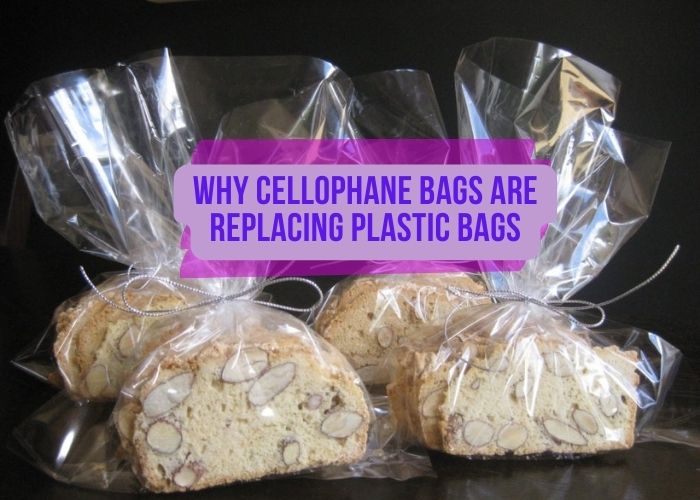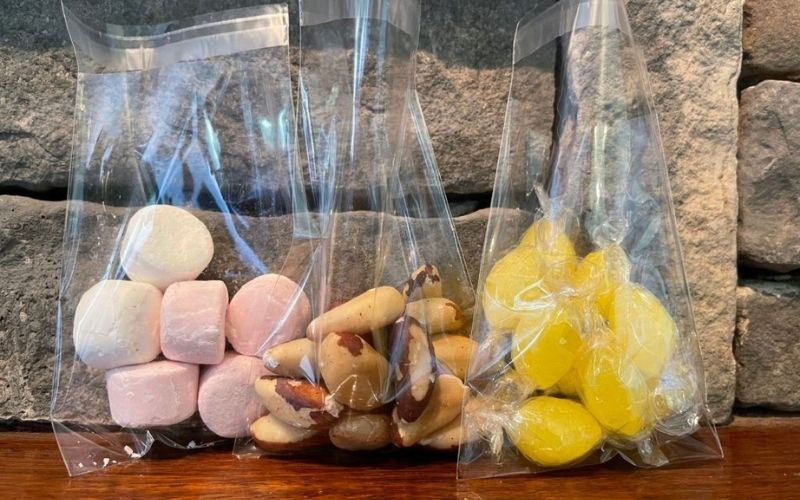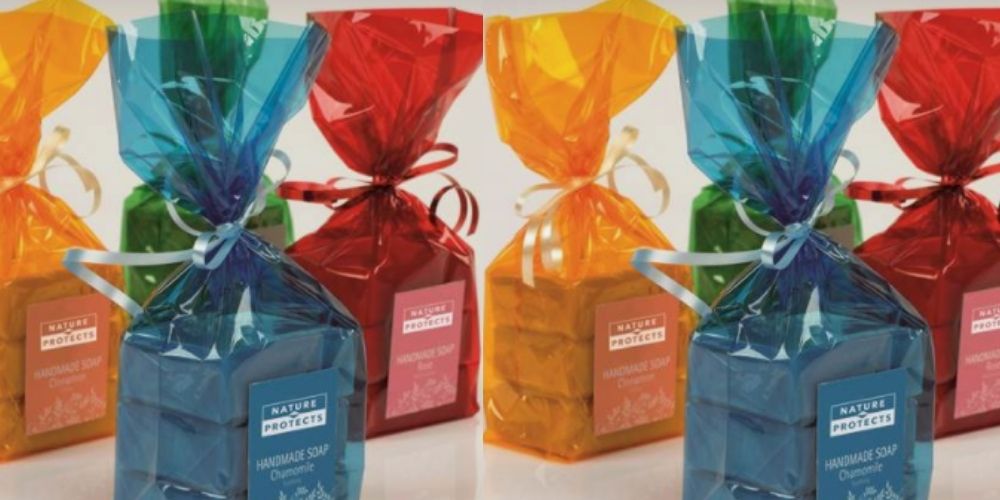Why Cellophane Bags Are Replacing Plastic Bags

In This Article
Cellophane was invented in 1900 but wasn’t commercially accessible until 1912. Cellophane was successfully used to wrap things like candies and cigarettes, but not for packing fresh food. Cellophane quickly became popular when moisture-proof cellophane was introduced in the late 1920s and was used extensively till the 1960s. Cellophane sales soared when alternative petrochemical-based plastics were introduced in the 1960s and became trendsetting. These plastics were less expensive to create and more robust, but there are significant issues about plastic waste.
Recently, there has been a significant emphasis on replacing plastic packaging items with more environmentally friendly and sustainable alternatives. Many countries across the globe have already outlawed plastic bags and more nations are thinking on these lines to save the environment. Cellophane packaging has become readily available in Australia, with websites in which you can buy cellophane bags online.
New bioplastics that are degradable, compostable, and biodegradable are being developed and introduced to the market. Still, you may be astonished to learn that certain biodegradable plastics are already available and have been a part of our daily lives and business activities for years. Cellophane is an excellent example of a bioplastic that we have been using for years, despite many people being ignorant of its environmental advantages.
Let us dig deeper to understand what cellophane is and why is it a great environmentally friendly option to replace plastic bags.
What is Cellophane?
Cellophane is a thin, generally transparent sheet of regenerated cellulose that has been regenerated from natural sources like wood and is mainly used as a packaging material. It’s suitable for food packaging since it’s impermeable to air, oils, greases, germs, and water. Although cellophane is susceptible to water vapour, it may be protected using nitrocellulose coating.
The structural component of plants, cellulose, is represented by the cellophane. Wood, cotton, hemp, and maize may all be used to make cellulose film. Cellophane, like plastic, cannot be recycled, although it is biodegradable and may be composted or dumped in the trash.
Biofilms generated from FSC-certified wood pulp are used in a few biodegradable cellophane bags. This assures that the bags are biodegradable and made from materials obtained responsibly. Cellophane was the only flexible, transparent plastic film available for many years following World War I and was used in everyday things like food wrap and sticky tape.
Cellophane is manufactured by dissolving plant fibre in an alkali solution with carbon disulphide to make viscose. After a sulfuric acid and sodium sulphate bath, the viscose is transformed to cellulose in the form of cellophane. Glycerol is added to make it less brittle when dried. Cellophane might be coated with nitrocellulose or wax to make it resistant to water vapour.
Environmental Impact Of Cellophane Bag Decomposition

Cellophane contains long chains of glucose molecules that breakdown into simple sugars. These molecules are capable of being absorbed by the soil. Soil bacteria degrade these chains because they feed on cellulose.
When cellulose decomposes into simple sugar molecules, soil bacteria can readily consume and digest it. As a result, the breakdown of cello bags has no adverse influence on the environment or biology.
However, during this aerobic breakdown process, carbon dioxide is created, which can be recycled and hence is not considered waste. Carbon dioxide, on the other hand, is a greenhouse gas that contributes to climate change.
Cellophane Bags Win the Battle Against Plastic Bags
Although the process of manufacturing cellulose packaging is complex, cellophane bags outperform plastic bags in many respects. Cellophane offers various environmental advantages in addition to being a plastic replacement.
- Cellophane, a groundbreaking material, revolutionised shopping and packaging. Polypropylene, a petroleum-based plastic, became popular in the 1960s. These polymers were less costly and more durable, but they produced a massive amount of waste.
- When compared to other environmentally acceptable plastic alternatives, cellophane, which is a byproduct of the paper industry, is the most cost-effective option.
- Cellophane composting may be done at home and and it is not necessary to employ a commercial composting facility.
- Cellophane transformed shopping and packaging as the first see-through material. By the 1960s, petroleum-based polymers like polypropylene had mostly supplanted cellophane. These polymers were less expensive to create and more durable, but they resulted in an enormous quantity of garbage. Cellophane, a groundbreaking material, revolutionised shopping and packaging. Polypropylene, a petroleum-based polymer, became popular in the 1960s. These polymers were less costly and more durable, but they produced a massive amount of waste.
- Cellophane bags are an excellent alternative for storing food items since they are lightweight and durable. When it comes to keeping baked goods, nuts, and other oily items in the refrigerator, these bags work well.
- Because it is created from cellulose generated from plants, cellophane is a sustainable product that is derived from bio-based and renewable resources.
- Cellophane will biodegrade, however the amount of time it takes depends on if it is coated or not. When buried, uncoated cellulose film degrades in 10 to 1 month, but nitrocellulose-coated cellulose film degrades in 2 to 3 months, according to research.
- When sealing cellophane bags, it is advised that you use a heat gun. It is possible to heat, seal, and preserve food goods in cellophane bags in a timely and efficient manner if you have the appropriate instruments.
Why Cellophane Bags Are Replacing Plastic Bags

In recent years, cellophane has had a rebirth in popularity. Due to environmental activists ‘ efforts, manufacturers and consumers have started recognising the risks of petroleum-based single-use plastics. Cellophane has several advantages compared to plastic, making it a more appealing alternative for companies who wish to avoid plastic.
Despite the difficulty of producing cellulose packaging, cellulose bags offer several advantages over plastic bags. Cellophane provides various environmental benefits in addition to being a plastic replacement. Because plastic bags are tossed into landfills worldwide, they take up a lot of space and generate toxic methane and carbon dioxide emissions, endangering human and animal health.
The use of plastic bags endangers both marine and agricultural life. As a result, the unintentional decline of essential earth resources has become a concern for many. The ecology, as well as agricultural productivity, are both in danger. Unwanted plastic bags in the fields wreak havoc on agriculture and harm the surrounding ecosystem.
On the other hand, cellulose is a nonrenewable material used to make cello bags. Unlike traditional plastic bags, cellophane bags may be recycled and used as another raw material once degraded. Cellophane bags are better than typical plastic bags for our ecosystem as cellophane is biodegradable and recyclable.
The decomposition of plastic bags might take hundreds of years. In contrast, cellophane dissolves entirely in a couple of months.
As cellophane decomposes, no toxic fumes or gases are produced. They are made of non-toxic materials and also don’t include any substances potentially hazardous to the environment. On the other hand, toxic compounds in regular plastic bags can contaminate food and beverages.
For these reasons, plastic bags are being phased out, favouring biodegradable cellophane bags, which are more environmentally friendly.
Conclusion
Cellophane is a cellulose-based sustainable polymer made from wood, cotton, hemp, and other plants. Due of its more ecologically friendly properties, cellophane bags are a superior alternative to plastic bags. The moment has come to consider phasing out plastic bags and paving the path for future generations to enjoy a healthier environment.

